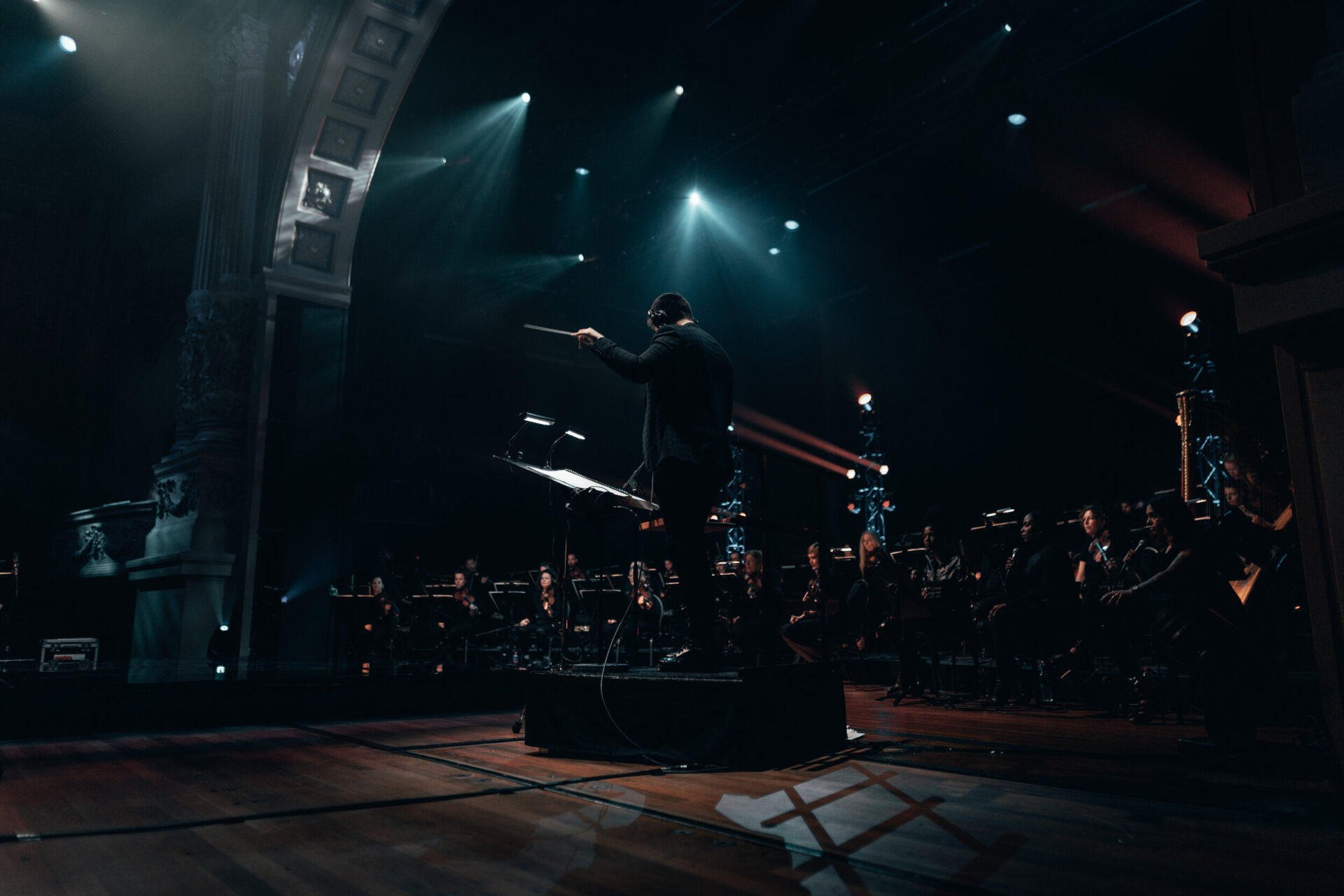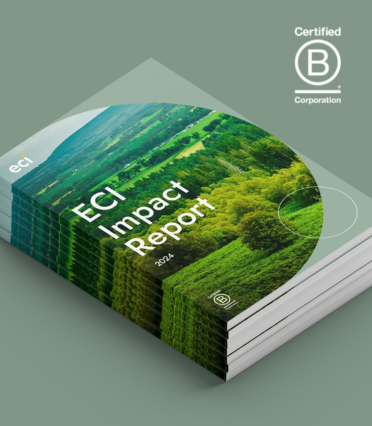The comparison is often made between business leaders and orchestra conductors – not playing a specific instrument, but rather bringing an ensemble together to create something exceptional.
In reality, a conductor’s role extends way beyond waving a baton and is a great example of leadership. They require a crystal-clear vision, exceptional communication skills and have to adapt quickly and manage multiple stakeholders. To bring the comparison to life, we spoke to the acclaimed and multi-award-winning saxophonist, conductor and arranger Phil Meadows about what makes a great leader.
Phil is recognised as one of Europe’s most talented and creative musicians, celebrated for his innovative approach to music. He’s a double Parliamentary Jazz Award, London Music Award and Peter Whittingham Jazz Award winner, and has collaborated with renowned ensembles including the BBC Concert Orchestra, Metropole Orkest, Royal Northern Sinfonia and Scottish pop icons, Texas.
Holding a long-standing residency at Ronnie Scott’s Jazz Club, and often managing ensembles of up to 100 people from diverse backgrounds, Phil has developed an exceptional leadership style.
Here are his top five insights for achieving this:
1. Foster an environment that caters for mistakes.
In music, as in business, true innovation comes from embracing risk. For me, the most exciting music stems from creative freedom and having the ability to freely explore thoughts and ideas without judgement.
When working with virtuoso musicians (or highly skilled teams), risk is accompanied by vulnerability. People open themselves up to criticism, putting their insecurities on display to develop their skill sets or contribute something new. When exploring new ideas, it’s crucial to foster an environment where mutual encouragement, shared learning and calculated risk-taking are valued and supported.
People who feel secure in their risk-taking, are more likely to contribute groundbreaking ideas.

2. Clarity of vision to inspire
When conducting orchestras, having a clear artistic vision is essential. I start all projects with in-depth research, exploring the music’s heritage and societal role. I aim to develop a programme, or performance approach that resonates with musicians, audiences and listeners alike and effective communication is key to achieving this.
Orchestral music is a team effort and to harness their skills, I need to clearly communicate my vision from the outset. I start before a note is even played by sharing playlists in advance and using the start of the first rehearsal both to provide cultural context and to outline the key goals for the project.
As rehearsals progress, I remain flexible and open to the musicians’ creative input and review my plan at the end of every session. Everyone brings unique strengths, and by listening and adapting the final performance benefits.
3. Diversity breeds creativity
I’ve always been passionate about bringing together different cultures and musical genres, and I’ve been fortunate to work on projects spanning Classical, Jazz, Nigerian Folk, Afrobeat, Hip-Hop, Grime, Dance, Electronic, Contemporary Classical and Commercial Pop.
Many of the orchestral collaborations I work on bring together multiple genres, meaning each project has a unique set of influences and often demand skill sets that go beyond traditional orchestral norms. To achieve this, I assemble diverse teams of specialists from the genres involved, where possible integrating the non-classical musicians into the heart of the orchestral line-up.
This approach allows musicians to play to their strengths, share knowledge, and learn from one another. By fostering a melting pot of creativity, we’re then able to honour the roots and traditions of the music whilst creating a new space for collaboration to flourish.
My work with the Metropole Orkest and 101 Barz (Orchestra and Hip-Hop), Engines Orchestra x Femi Temowo (Orchestra with Nigerian Folk and Afrobeat) and the BBC Concert Orchestra and Texas (Orchestra and Commercial Pop) are great examples of fusing different musical communities and cultures.
4. Make listening to others a main focus
Every ensemble I work with is filled with incredible talent and expertise. Each musician brings a unique story, skillset and perspective that can add value to any project. I may craft the overarching vision and guide the orchestra, but the players know a lot more about their instruments than I do. They’ve dedicated decades to mastering their individual craft, so it’s important I listen and make space for their input.
The success of my projects relies on facilitating an environment where everyone feels confident to ask questions and comfortable offering suggestions, even within the traditional hierarchies and structures of an orchestra. Although the vision I develop provides direction, I always incorporate space for flexibility into the plan, recognising that the musicians’ insights are crucial to producing the best possible music together.
5. Build on people’s weaknesses through their strengths
My approach to skill development uses existing strengths to develop areas of weakness and was key in my work with the National Youth Jazz Orchestra’s under-18 programme, where I spent a decade nurturing young talent. It continues to guide my methodology for world’s top professional orchestras and forms a core part of my PhD research.
The approach is grounded in the science of learning, with a focus on the retention of new information. Essentially, it’s about linking new skills to what we already know and ensuring we don’t overwhelm ourselves by trying to learn too much at once.
The science behind this is detailed and my approach combines two theories, but its practical applications are reasonably straightforward. Pressing (1984) determined that we can most effectively learn one new skill at a time, whilst using two sets of established knowledge clusters to support the process. Wolfe (2010) developed the ‘working memory’ concept which combines the need for multi-sensory instruction (learning through a variety of methods that support each other to aid long-term retention) and the reinforcement of new information repetition.
Essentially the approach strengthens our neural pathways, making it easier to recall and apply what we’ve learnt. But put simply, it’s about linking new skills to what we already know and ensuring we don’t overwhelm ourselves by trying to learn too much at once.
You can see Phil perform live throughout the year. His dates can be found here.

